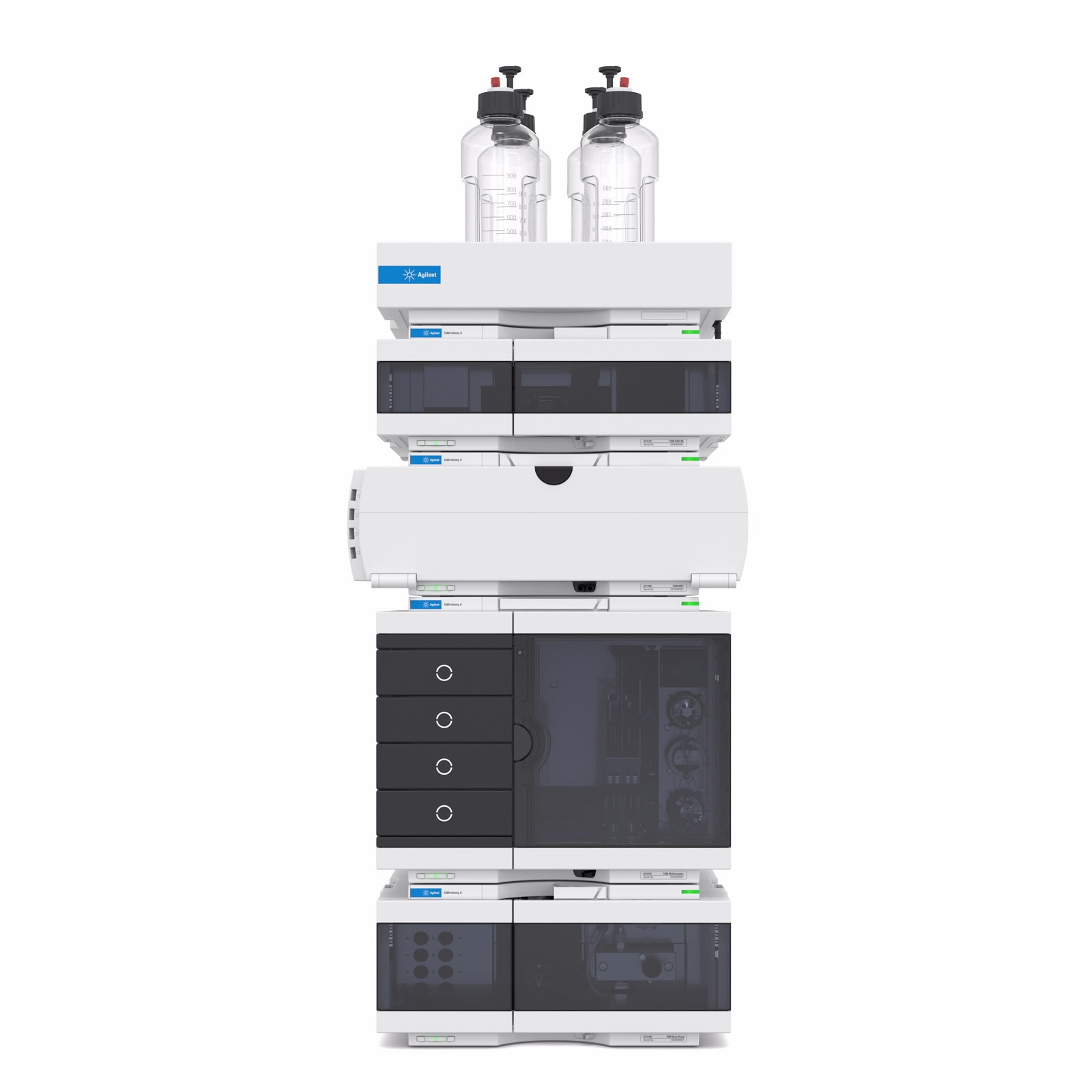Introduction
The Agilent 1260 Infinity Quaternary LC is designed to offer the greatest flexibility for performing analytical liquid chromatography using all types of current and emergent column technologies.
The solvent cabinet is a case to keep four bottles with solvent standing framed and stable, so that they can be connected by solvent tubings to the LC System.
The quaternary pump generates gradients by low pressure mixing from four individual solvent channels.
The autosampler is specifically designed for the Agilent 1200 Infinity Series system for increased analysis speed with sensitivity, resolution, and precision.
This stackable temperature-controlled column compartment is used for heating and cooling in order to meet extreme requirements of retention time reproducibility.
Signals triggered by UV absorption are sampled to be converted to electrical signals in order for display and software handling.
One stack configuration: Ensure optimum performance by installing the modules of the Agilent 1260 Infinity LC System in the following configuration. This configuration optimizes the flow path for minimum delay volume and minimizes the bench space required.

Two stack configuration: To avoid excessive height of the stack when the autosampler thermostat is added to the system it is recommended to form two stacks. Some users prefer the lower height of this arrangement even without the autosampler thermostat. A slightly longer capillary is required between the pump and autosampler.
The quaternary pump is based on a two-channel, dual-plunger in-series design which comprises all essential functions that a solvent delivery system has to fulfill. Metering of solvent and delivery to the high-pressure side are performed by one pump assembly which can generate pressure up to 600 bar. Degassing of the solvents is done in a built-in vacuum degasser. Solvent compositions are generated on the low-pressure side by a high-speed proportioning valve (MCGV).

The pump assembly includes a pump head with a passive inlet valve and an outlet valve. A damping unit is connected between the two plunger chambers. A purge valve including a PTFE frit is fitted at the pump outlet for convenient priming of the pump head. An active seal wash (optional) is available for applications using concentrated buffers as solvents.
The Agilent 1260 Infinity Autosampler is designed to offer the well-established Agilent flow-through design with variable volume injection and to achieve extremely low carryover. The small hydraulic volume of the flow path is suited to fast gradients and the ability to use overlapped injections and automatic delay volume reduction (ADVR) contribute to faster cycle times and even faster gradient delivery to the column.

The system draws exactly the set volume of sample solution without waste and achieves high reproducibility across the whole range of possible injection volume. The autosampler is controlled from G4208 A Instant Pilot or from the Agilent Data System.
The Agilent 1260 Infinity Thermostatted Column Compartment is a stackable temperature-controlled column compartment for LC. It is used for heating and cooling to meet extreme requirements of retention time reproducibility. Its main features are:
The detector functions with either diode-array (DAD) or variable wavelength (VWD) detection.